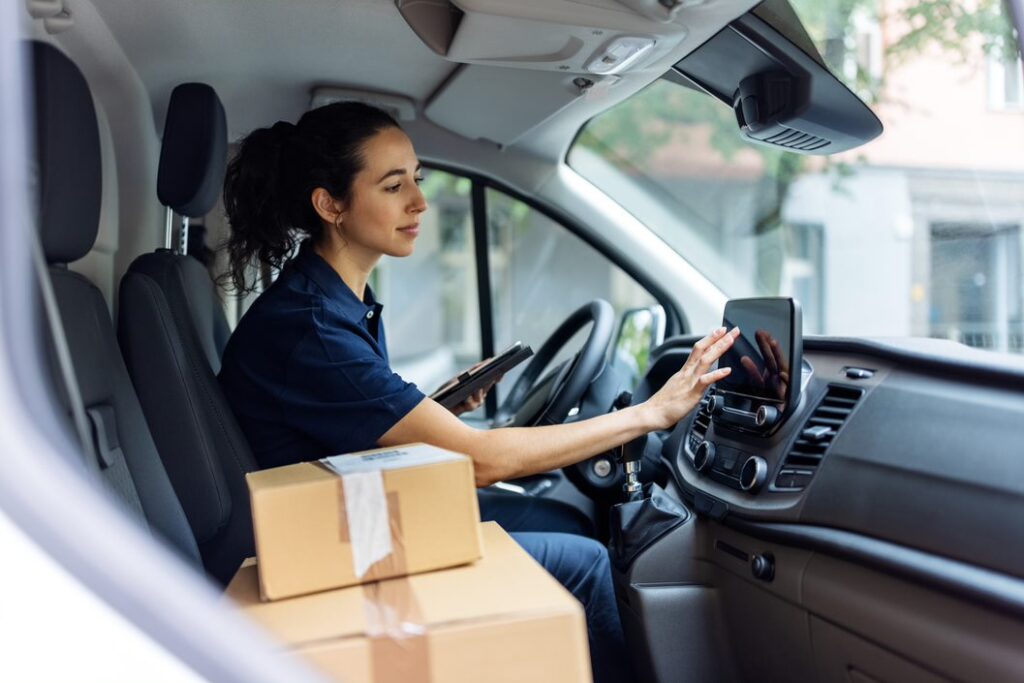A new study by Accenture in collaboration with Frontier Economics has revealed that by taking bold steps to transform how last-mile delivery ecosystems operate, post and parcel organizations, retailers and delivery companies could reduce harmful emissions and traffic congestion within cities.
The report, ‘The Sustainable Last Mile: Faster. Greener. Cheaper.’, found that using local micro-fulfilment centers (MFCs) across Chicago, London and Sydney to fulfill just half of the e-commerce orders in those cities could reduce traffic volume and harmful air emissions – and that last-mile supply chains using MFCs could lower delivery vehicle-related emissions by 16-26% by 2025.
A flexible logistics solution for e-commerce, MFCs enable inventory to be stored closer to customers in convenient suburban locations, enhancing supply chain processes, speeding up last-mile deliveries and enabling in-person pick-up of parcels. MFCs include in-store click and collect points, automated locker storage facilities and standalone micro-warehouse facilities.
Increasing the use of MFCs to enable same-day or next-day deliveries provides retailers and postal and logistics organizations with operational benefits while simultaneously creating significant positive environmental and societal impact, according to the study.
Of the three cities included in the study, London would likely see the largest delivery traffic reduction from the use of MFCs – 13%, equating to about 320,000,000 fewer miles traveled by delivery vehicles. Chicago’s delivery traffic could also be reduced by 13%, equal to 127,000,000 fewer miles traveled across Cook County. For Sydney, the report forecasts about a 2% reduction in delivery traffic, or about 16,000,000 miles of reduced vehicle traffic across the Greater Sydney region.
“The carbon footprint of the last mile has long been an environmental and societal challenge,” said André Pharand, a managing director at Accenture who leads the company’s postal and parcel practice. “It’s time to take action and make the last-mile supply chain more efficient, less expensive and more sustainable. Organizations with innovative local fulfillment strategies and which lead in digital adoption and sustainable business practices will become tomorrow’s industry leaders.”
The study identifies substantial and achievable reductions in the emissions of carbon dioxide (CO₂), nitrogen oxides (NOX ) and particulate matter (PM10) arising from a reduction in delivery vehicle volumes through the increased use of MFCs. The greatest CO₂ reductions could be achieved in London (144,000 tons), followed by Chicago (68,000 tons) and Sydney (52,000 tons). The offering of convenient click and collect options by retailers could encourage consumers to travel in-person – whether by low-emission vehicles such as private cars, by zero-emission vehicles such as bicycles, or on foot – to collect parcels at local fulfillment centers, further contributing to reduced consumer traffic volumes and vehicle emissions.
To help capitalize on the opportunity, the report identifies key strategies for transforming last-mile delivery practices. These include governments and retailers incentivizing greener choices among consumers and businesses; delivery companies and postal agencies reassessing how they manage their supply chains and deploy assets such as heavy goods vehicles; and the greater use of data and analytics technologies by e-commerce retailers and logistics organizations.
The study also found that deploying route optimization technologies alongside MFCs could reduce delivery traffic by an additional 3-4% across the three cities. The additional reduction in vehicle travel would be highest for London (87,000,000 miles), followed by Chicago (38,000,000 miles) and Sydney (34,000,000 miles)
“No single entity can solve the challenge of last-mile delivery alone,” Pharand said. “It will take an ecosystem of partners working together to create a major evolution in sustainable delivery practices through the pairing of human ingenuity with technology. We believe that our study points the way forward.”


